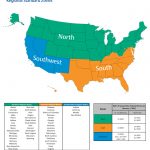
The U.S. Department of Energy (DOE) recently announced changes to regulations regarding residential, central air conditioners. Historically, residential air conditioning regulation changes have mostly affected equipment manufacturers and contractors who build and install your equipment. However, you may be interested to know how these regulations can affect the cost the equipment you buy and your utility bill.
Energy efficiency standards for air conditioning were established to reduce the portion of our overall energy consumption that goes into cooling our homes and to make sure that we are using high efficiency air conditioning equipment to do it. The Energy Policy and Conservation Act of 1975 specifies efficiency standards for several common appliances used in homes, including air conditioners. The DOE can determine, from time to time, whether more stringent standards for these products would be technologically feasible and economically justified, and would save a significant amount of energy.
The energy efficiency of a central air conditioner is measured by its SEER rating. SEER indicates the amount of energy your AC unit consumes. The higher the number, the more efficient the equipment. In 2006, the national energy efficiency standard for air conditioning changed from 10 SEER to 13 SEER (a 30 percent increase). The next round of efficiency standard changes will happen on January 1, 2015.
In 2015, the national standard is changing to a model that will specify separate regional standards for air conditioners based on various environmental factors, such as the length of the cooling season. The country will be divided into three regions, each with a different minimum efficiency requirement. The regions are North, South and Southwest. The map below shows the three regions and the table shows the new efficiency requirements for each area. The standards for heat pumps will continue to be national, but will change from 13 SEER to 14 SEER.
We expect consumers will see minimal effects from these changes during 2015 because there is an 18 month “sell through” period allowing the dealers in the South and Southwest regions to deplete their inventory of 13 SEER systems. This also allows dealers in the North can deplete their inventory of 13 SEER heat pumps. After January, there will probably be a gradual transition from 13 SEER to 14 SEER in the effected regions, with all sales moving to the new standard by July 1, 2016.
As you might have guessed, the price of a 14 SEER unit is going to be slightly higher than the price of a 13 SEER. This is because 14 SEER equipment requires more copper, aluminum and steel to achieve that rating. The actual price you pay will depend on the brand you chose to buy and your geographic location, but in general, the prices for air conditioners and heat pumps will likely increase sometime during 2015 and early 2016, as the outdated equipment is sold off.



